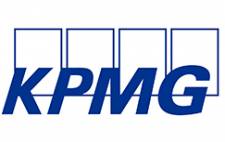Amid the COVID-19 crisis in 2020, it became evident that people were key to navigating through the uncharted waters of the pandemic.
It was people, guided by strong leadership, who devised innovative ways to solve issues such as embracing telemedicine and developing vaccines. They proved to be adaptable in taking on new roles, developing new skills and working in entirely different environments.
Prime Minister Jacinda Ardern coined the now often used phrase “team of five million” to emphasise how all New Zealanders must work together to stop the spread of COVID-19. When it seemed that District Health Boards were in danger of being overwhelmed with patients, it was not just the Director-General of Health Ashley Bloomfield, but also the doctors and nurses who were prepared to go into battle.
It is imperative in the current environment that boards challenge their leadership teams to effectively unlock the human potential of all employees so that they are empowered to use their time and abilities to help the business deliver on its purpose.
Unlocking human potential
Unlocking human potential requires the following seven key elements:
- Unwavering commitment to your “why” while providing flexibility on “how”: Customers and employees want to be clear about why an organisation exists. In times of crisis, it is even more important to ensure that your organisation remains committed to its purpose but is also flexible in how it achieves it. If employees are clear on the “why” but are given enough leniency in how to deliver the desired outcomes, they will be more inclined to find new and innovative ways of doing things.
- Focus on building capabilities: Jobs were the organisational building blocks of the past. Capabilities are the building blocks of the future. Organisations need to have a clear understanding of the capabilities required to deliver on their business strategy - now and in the future. They should consider the changing needs of the business sector, customer preferences and channel strategy. A dynamic approach to capability requirement assessment and internal development of capabilities is required to remain competitive in a constantly shifting environment.
- Develop an agile approach to capacity management: Employee capacity needs to be fluid enough to move from area to area as business requirements change. This means establishing mechanisms by which leaders know exactly where there is capacity in the organisation and, equally, employees can clearly see available opportunities. Internal job marketplaces are being used effectively by some firms to match open opportunities with capacity.
- Employee empowerment: Employees need to be empowered to solve problems, fill capacity gaps and upskill in a manner that is fulfilling to them and the organisation.
- Building wellbeing and resilience: Proactively managing the wellbeing of all employees is key to the sustainability of any business. If this is not managed effectively, the impacts include higher turnover rates, absenteeism, health problems and workers compensation claims due to burnout - with a knock-on effect of crippling employee productivity. Of course, the first step is to ensure health and safety mechanisms are in place to protect the physical health of employees and their families. More broadly, an understanding of the mental strains that employees are under, the demonstration of empathy, and the allowance of bespoke solutions to suit individual needs will help employees stay well and productive throughout the year.
- Diversity and inclusion: The link between the diversity of thought and innovative problem solving is now clearly understood. It’s important to build bench strength with people from diverse backgrounds at all levels of the organisation in order to develop the innovative solutions required to be nimble in the current climate.
- Measurement and reporting: There needs to be consistent measurement and monitoring of the gap between the shifting capability and capacity requirements of the business, and the plan to fill this gap. This reporting should also take account of lag indicators, provide predictive analysis that identifies future opportunities and risks, and how these will be capitalised on or mitigated against.
Given the importance of human capital to survive the year ahead, there are a few key questions we as leaders should ask ourselves.
How much time did you spend discussing workforce strategy at your last board meeting?
What internal information around the capability and capacity of human capital within your organisation do you request on a regular basis?
And finally, how are you ensuring the environment is driving appreciation of human capital as opposed to depreciation of human capital, to ensure a sustainable business model in the future?
About the author
Lucy Neame, director at KPMG New Zealand.

